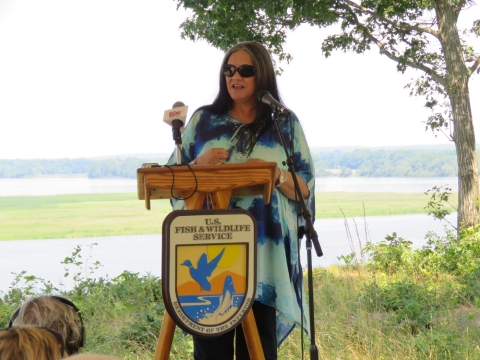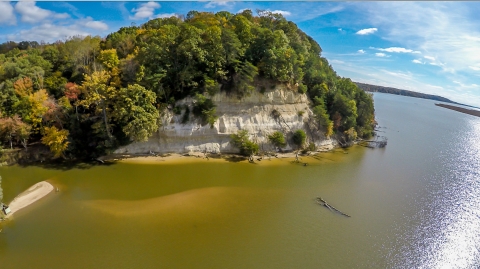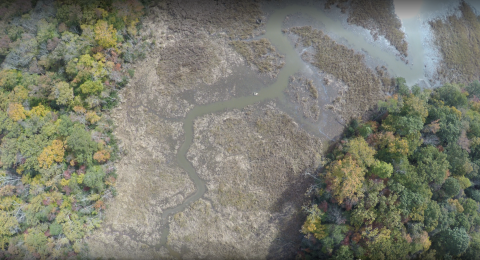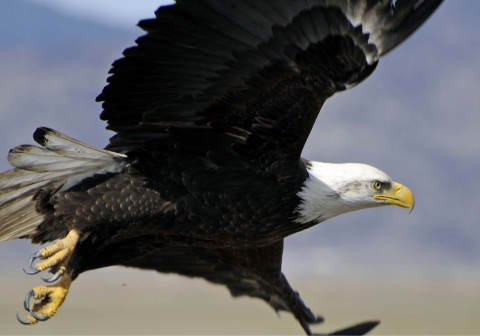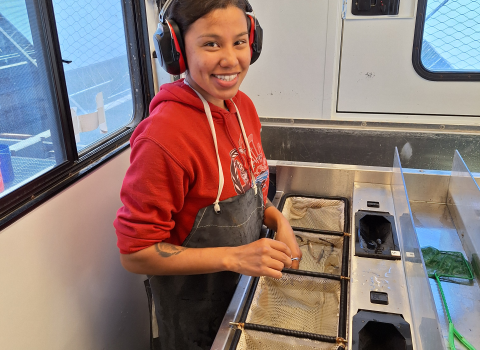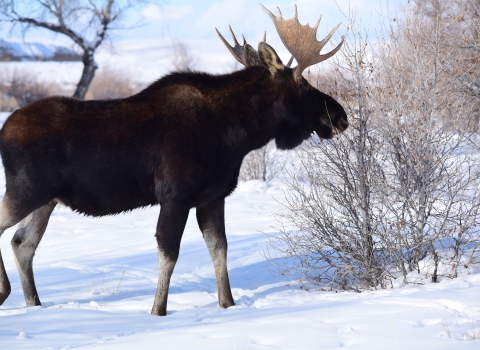Rising more than 100 feet above the glittering waters of the Rappahannock River, Fones Cliffs is unmistakable. Its pristine white cliffside teems with flourishing wildlife. Rushing water and the call of eagles create a welcoming harmony. Like the Arizonan canyons or West Virginian mountains, this is a sacred space.
This land is the ancestral home of the Rappahannock Tribe. After centuries of separation, land and tribe are united once again.
On April 1, 2022, in collaboration with Rappahannock River Valley National Wildlife Refuge and Chesapeake Conservancy, Rappahannock Tribal leaders hosted Department of the Interior Secretary Deb Haaland, U.S. Fish and Wildlife Service Director Martha Williams and a host of other partners to celebrate the Tribe’s re-acquisition of 465 acres of Fones Cliffs adjacent to the Rappahannock River Valley National Wildlife Refuge.
“It is difficult to put into words how much it means to our people to walk in the footsteps of our ancestors who were driven from these very lands nearly 400 years ago,” said Chief Anne Richardson. “Their spirits remain here, and we will remember and respect them, as we do the eagles, plants and wildlife that thrive here. We were river people then and will continue to be river people in the future.”
Recognizing the past
Prior to the ceremony, Secretary Haaland, Director Williams, and representatives from Chesapeake Conservancy, National Park Service, National Fish and Wildlife Foundation, and U.S. Fish and Wildlife Service were treated to a boat tour of Fones Cliffs. From the water, they witnessed a view not unlike the one Captain John Smith might have seen during the first English encounter with the Rappahannock Tribe in 1607.
At that time, the cliffs were occupied by three villages: Pissacoack, Matchopick and Wecuppom. English settlement began encroaching on these Tribal lands in 1640. During the following seven decades, the Rappahannock people contended with colonial violence and expansion that eventually forced them from these ancestral homelands.
During Friday’s historic event, the Tribe celebrated their homecoming, as well as restoration of the original name of Pissacoack to the land.
Although there are no plans for archeological exploration at this specific property, St. Mary’s College of Maryland anthropology professor Julia King and her team of archeological instructors and students have conducted digs at adjacent properties owned by Rappahannock River Valley National Wildlife Refuge. During these studies, the team unearthed evidence of indigenous inhabitance dating back to the 1600s.
By studying these artifacts, as well as the land in which they were discovered, we learn more about our shared history and the lives of those who came before us.
So much of how a people defines itself is rooted in their sense of home. The places where we grow, learn, and experience life are the cornerstones of our character. By holding spaces significant to our heritage as a nation, we transform these landscapes into cultural classrooms. When we visit these locations, we discover the world through ancestral eyes and better understand the foundations of American society.
“When we work together to conserve significant locations like Fones Cliffs, we continue the complicated work of honoring a shared history and recognizing our national identity,” said Secretary Haaland.
Passionate commitment
This was not a simple transaction. The opportunity was the result of careful coordination, strategic financing, and above all, committed and passionate individuals.
Through the generosity of the family of William Dodge Angle, M.D., and with support from the National Fish and Wildlife Foundation and a grant from Walmart’s Acres for America Program, Chesapeake Conservancy purchased the land and donated a conservation easement conservation easement
A conservation easement is a voluntary legal agreement between a landowner and a government agency or qualified conservation organization that restricts the type and amount of development that may take place on a property in the future. Conservation easements aim to protect habitat for birds, fish and other wildlife by limiting residential, industrial or commercial development. Contracts may prohibit alteration of the natural topography, conversion of native grassland to cropland, drainage of wetland and establishment of game farms. Easement land remains in private ownership.
Learn more about conservation easement to the Service. Land ownership was donated to the Rappahannock Tribe, which intends to place the property in Trust with the Bureau of Indian Affairs.
Through the easement, the Service will have an opportunity work in close collaboration with the Tribe on conservation of the natural and cultural resources found here. This agreement preserves the Tribe’s private ownership rights, while the Service ensures the land will be permanently protected from development.
There is still much work to be done.
This celebration marks just one victory in the larger effort to reclaim and protect more than 2,000 acres at this sacred location. The adjoining acreage is owned by a corporation seeking to develop the land for residential and commercial use. In 2014, developers illegally cleared more than thirteen acres along Fones Cliffs, weakening natural defenses against erosion and destroying essential wildlife habitat.
Without healthy root systems to secure sediment at the cliffside, cleared locations are susceptible to landslides. Although the cause is uncertain, in 2020, a local fisherman discovered a landslide 800 feet long, where 28,000 tons of soil had slid off the cliff face adjacent to this clearing. This sediment contaminated the Rappahannock River with nitrogen, threatening the delicate balance of nearby ecosystems.
Neighboring wetlands, as well as large marshes across the river, are of crucial import to rare and threatened plant life and several protected species of fish and waterfowl. Fones Cliffs is a global Important Bird Area for resident and migratory birds. This essential habitat is the sheltering site for the mid-Atlantic's largest population of bald eagles, who hold spiritual significance to the Rappahannock Tribe as prayer messengers.
A voice for nature
Part of honoring the past is recognizing its place in the present and future. The Rappahannock Tribe intends to expand their Return to the River program to Pissacoack. This initiative teaches leadership skills and passes down traditional cultural knowledge of the river to Tribal youth. This property will allow the Tribe to retain their cultural identity and maintain the traditions of their ancestors.
The Tribe plans to create trails and construct a replica of a 16th-century village, where they can educate the public about their history and indigenous approaches to conservation. This interpretive opportunity is essential. For decades, indigenous voices have been silenced and side-lined. Through the Return to the River program, the public will learn about the Rappahannock Tribe’s history, traditions, resilience, and commitment to conservation.
“As we stand together in this sacred place,” said Director Williams, “we’re reminded of what true partnership can look like and achieve: Passionate people working collectively with a shared mission of conserving our natural and cultural resources for the benefit of future generations.”
This project sets a precedent for collaborative conservation. By valuing the assets each partner has to offer, this joint effort proves that ownership does not need to be exclusionary. Instead, organizations and nations with similar goals can pool resources and knowledge to find new ways to cooperate in the interest of conservation.
“Successes of this magnitude don’t happen without collaboration among committed partners, said Chesapeake Conservancy CEO Joel Dunn. “Chesapeake Conservancy is proud of our engagement over the years to protect Fones Cliffs, and we continue to stand united with the Rappahannock Tribe, the U.S. Fish and Wildlife Service, and so many conservation organizations and individuals whose diligence and commitment contributed to the success of this project.”
Efforts like this are reminders of the power of partnerships. They not only accommodate but require the perspectives of stakeholders from all backgrounds. As a society, we have a vested interest in the future of the natural and cultural resources that not only define who we once were but lay the foundation for who we are becoming.
The U.S. Fish and Wildlife Service is committed to pursuing innovative conservation strategies to serve both wildlife and people. Evidence of this commitment will flourish far above the Rappahannock River, where bald eagles soar and new generations of conservation stewards put down roots.


